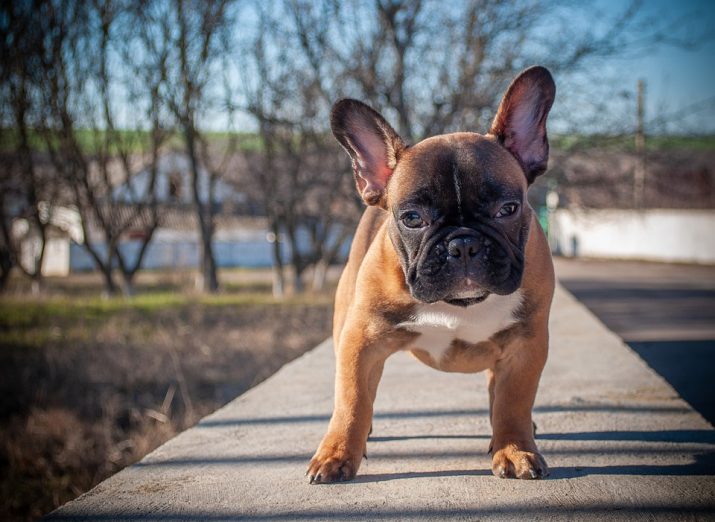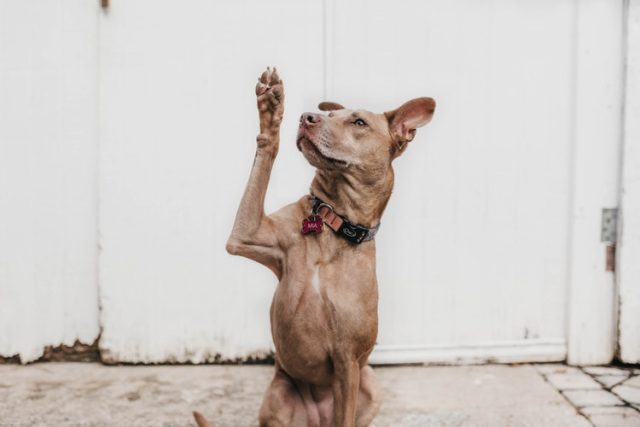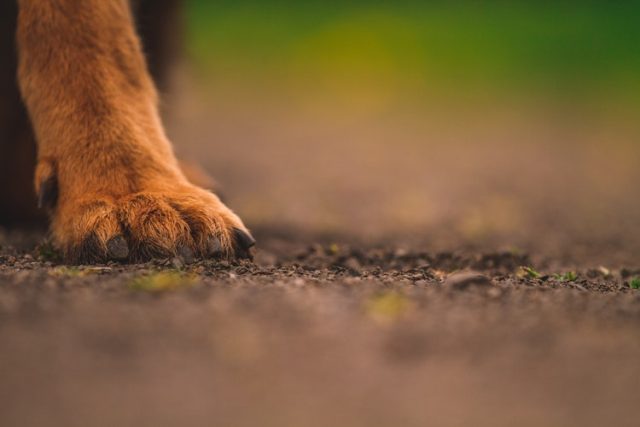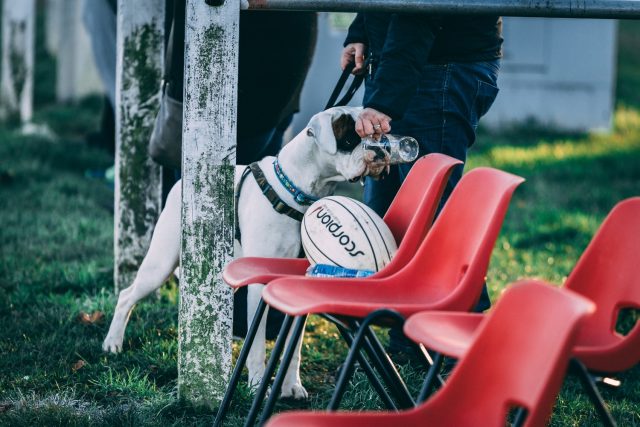Paw Care for Dogs: Everything You Need to Know This Summer
By Krystn Janisse
June 10, 2019 • Fact checked by Dumb Little Man

Your dog's paws are like his shoes. If your shoes were cracked, broken or otherwise in disrepair, you’d probably be, at best, uncomfortable and possibly in pain.
It’s quite common for pet owners to see their dog’s bodies as relatively self-sustaining, but many external factors can affect their health and happiness. The weather should always be taken into account when planning your dog’s outdoor activities.
Dog boots and protective waxes are popular in the colder months. As a Canadian, I have experienced firsthand the ravaging effects of a harsh Canadian winter, but we often overlook how much damage our summers can do, too.
What to Look Out For

Think about walking down the street barefoot on a typical August afternoon. Ouch, right? Well, imagine how your dog feels on his daily walks. Most dogs aren’t complainers, so you may not even realize the damage right away.
The heat from walking or running on pavement can burn the skin on the pads of their feet. This can result in cracked, raw, and tender tissues. Pain associated with paw burns can reduce activity and affect mobility. If not corrected, it can cause permanent damage.
Not every province experiences blistering summer heat, but Canada still gets pretty darn hot. Come May- or maybe more like June- we put away our mittens and toques and whip out the flip flops and sunscreen.
We understand how the sun and heat can affect us and how to protect ourselves, but what are we doing to protect one of the most sensitive spots on our dog’s bodies? The answer is not enough, but we can help you change that.
How to Heal Burnt Paws
Take a good look at your dog’s paws. If your dog has been showing signs of pain after a summer walk, it probably means that he has burnt or damaged his pads in some way already.
If the damage is minor and superficial, then make sure to clean the areas to remove bacteria and prevent infection. Gently scrub the wound using soap and water. Avoid alcohol-based cleaners and disinfectants as they will sting. Apart from that, they can dry out the damaged area of the pad further.
Dry the area and keep your dog indoors or on soft surfaces for a day or two. This is to allow the skin to partially heal.
Deeper or larger wounds may need to be wrapped with sterile gauze or bandages until the healing process is well underway. Try to discourage your dog from licking at, chewing on or scratching with that paw while it is healing. This will prevent bacteria from getting into the wound and reduce the risk of infection.
Once the area is free of any open wounds, apply a topical conditioning treatment to moisturize the pad and allow the area to heal fully. Coconut oil and aloe vera are great natural topical treatments. They are gentle and safe to ingest if your dog licks that paw after application. Resume normal outdoor activities, but avoid pavement and extreme heat.
If the damage to the paw is causing pain, limiting mobility or is getting worse, then it’s imperative that you take your dog to the vet. Open wounds can lead to infections and, when left unattended, can develop into more severe conditions.
Proper Paw Care for Dogs
It’s time to start helping your dogs put their best foot forward, or rather, onto the grass, into a shoe, or back inside until the sun isn’t baking the asphalt.
Here are four tips for fortifying Fido’s feet so that you can both enjoy summer fun in the sun.
Pick a better time to adventure
If the weather is hitting 20+ C in the blistering midday sun, it’s best to wait until a cooler part of the day for outdoor activities. Early morning and dusk are great times to catch some of the sun’s cooler rays. If you can cook an egg on the sidewalk, then you might just cook your dog’s paws, too.
Protect your dog's paws
Paw protection comes in many forms, but running boots for dogs will provide the most effective protection. They will take some getting used to but will prevent paw burns better than any topical protector.
Running boots may look similar to winter dog boots, but with a few key differences:
- Not fleece-lined like winter boots
- Often have a flatter textured bottom to provide grip
- Made from breathable materials and won’t overheat your dog’s paws
That being said, boots should be the last thing you put on and the first thing you take off after your outing. If the weather is starting to cool down or you are no longer walking on a hot surface, feel free to remove the boots.
Find some shade and stay off the pavement
Paved trails are very attractive to runners and provide a simple route for a routine walk, but they are typically exposed to a lot of sunlight. Instead, find a grass or dirt path with some tree cover. These areas will be cooler for your dog’s paws and just as fun to walk, run or hike.
Pet-safe pest repellents are a good investment as cooler and wooded areas will host more mosquitoes and other annoying pests.
Condition your pet’s paws
Before and after walks, apply a conditioning wax to their pads. Make sure it is fully absorbed before you hit the bricks. Not only will it protect their pads from wear, tear, and heat, it will help heal cracked and damaged pads, too.
Keep hydrated

Dehydration affects your dog's skin, including their pads. To reduce dryness and help the healing process, encourage your dog to drink often. Always bring a source of water on any outdoor adventure. The hotter the weather, the more important water becomes.
Choose the Solution That's Right for You
For dogs that aren’t comfortable with you touching their paws, these practices will have an adjustment period. Go very slow and keep high-value treats on hand to reward every time your dog allows you to touch their paws.
Not every paw care routine is right for every dog or every location. Try them out to see which one protects your dog the best. Hot weather can limit the opportunity for outdoor fun, but do your best to maintain your dog’s physical routines. Try adding indoor games and exercise or rearrange your schedule to shift playtime to better times of the day.
Paw protection can extend and improve summer playtime and encourage your pet to stay active. Make the most out of your dog's days of summer by implementing a paw care routine.
Krystn Janisse
Krystn Janisse is the content writer for Homesalive.ca and a pet nutrition enthusiast. She has worked in many facets of the pet industry for over a decade and loves to share her passion for animal welfare with others.

